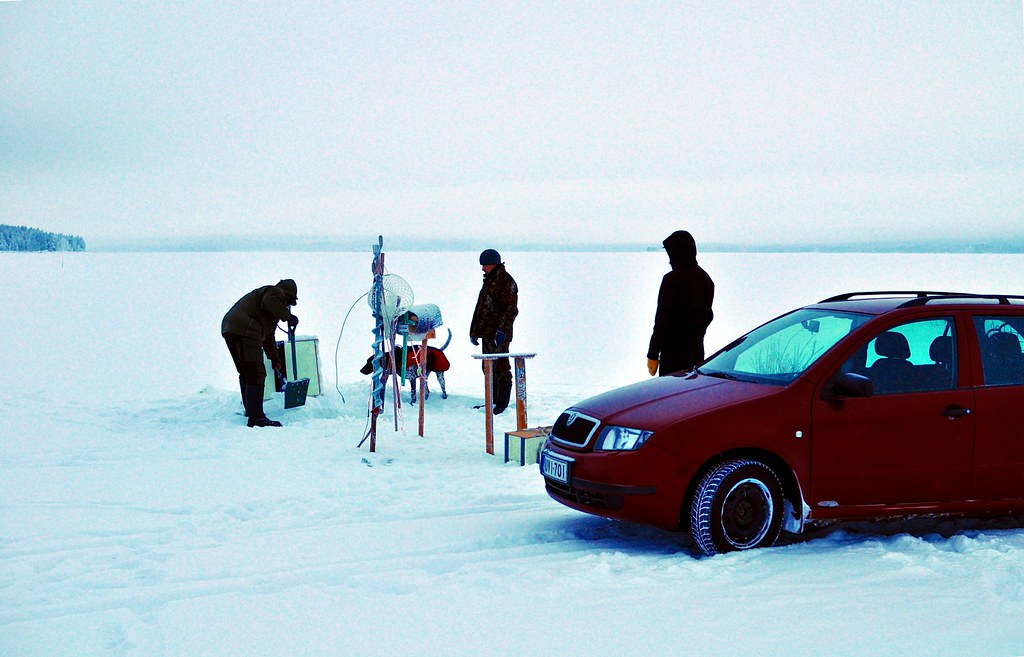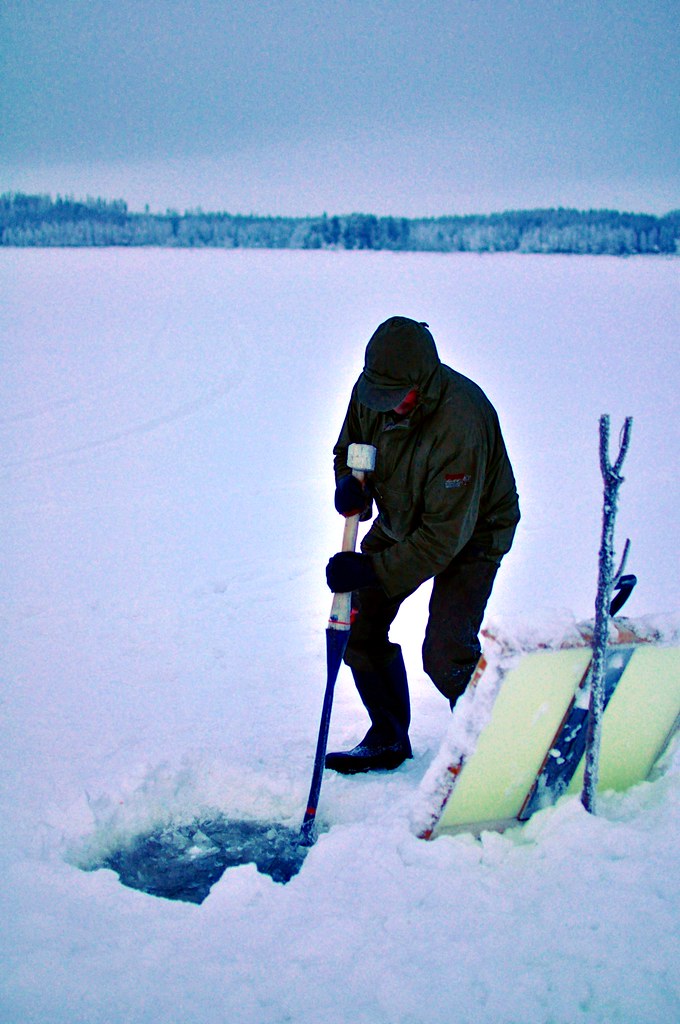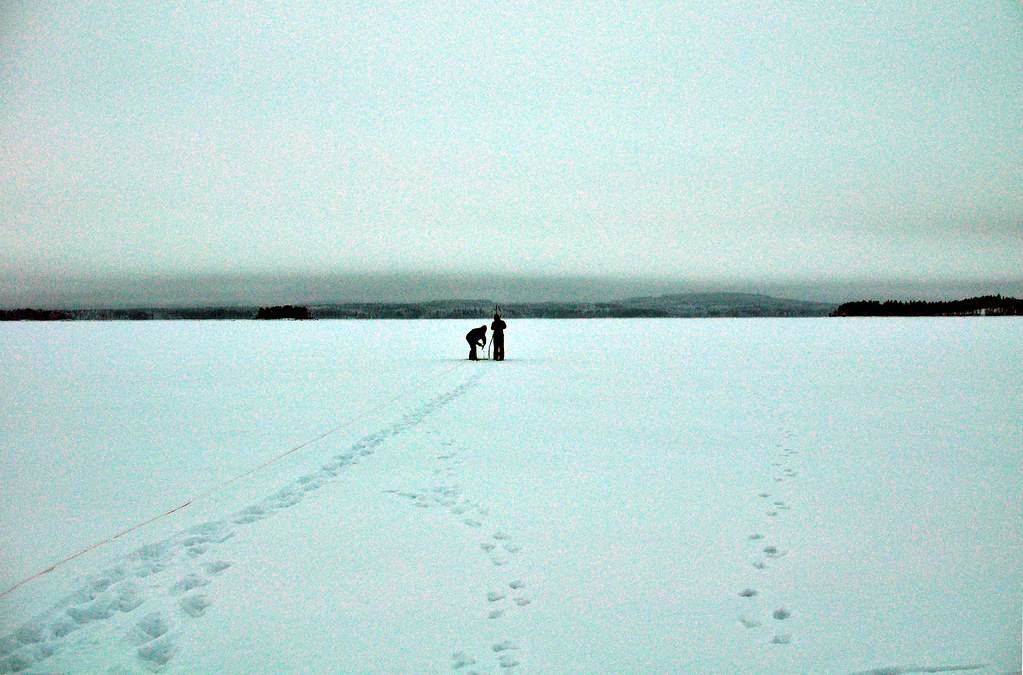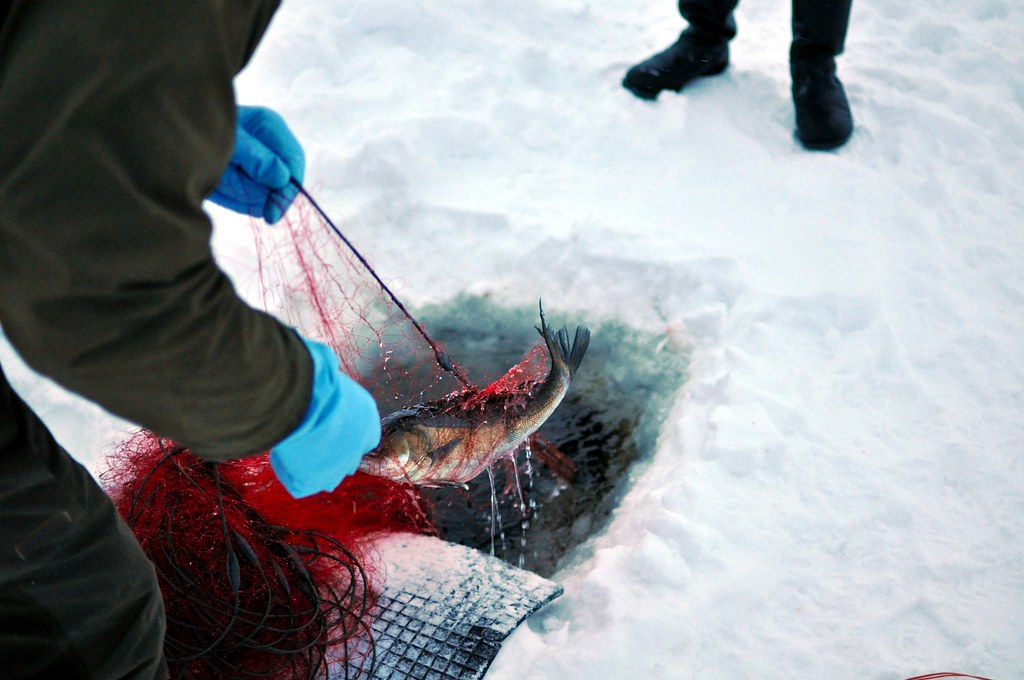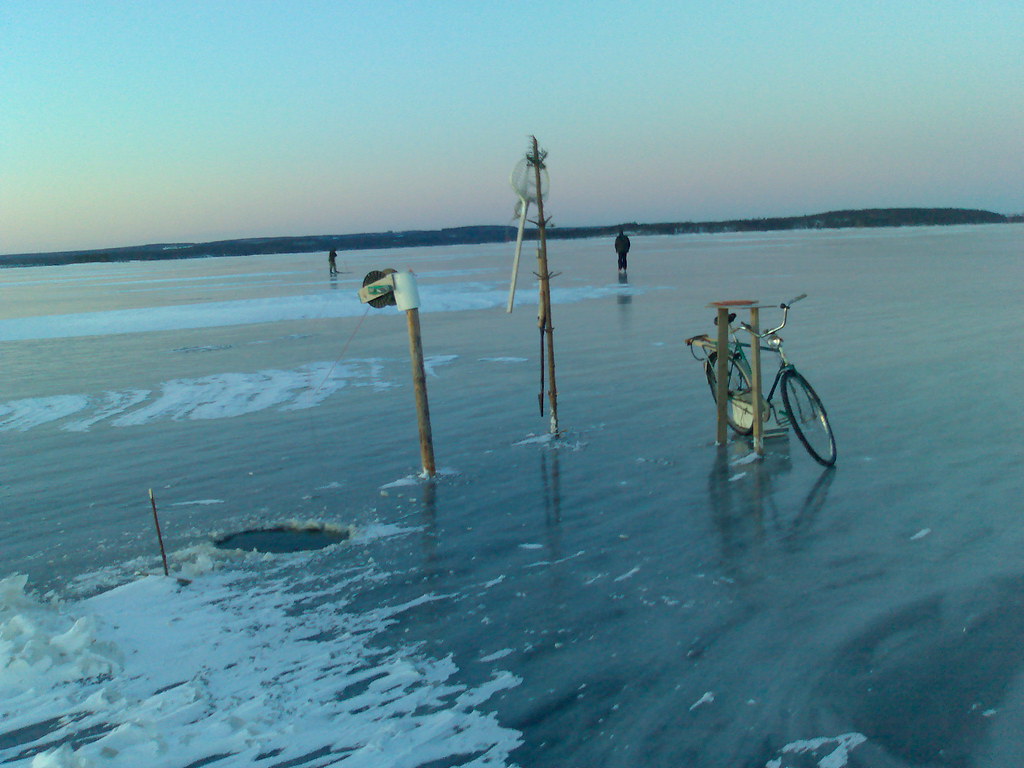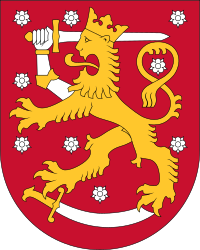The Swedish bureaucracy watchdogs, Ombudsman for Justice (Justitieombudsmannen, JO) and Chancellor of Justice (Justitiekanslern, JK) have been actively criticising various authorities in the country for unduly long processing times. For a good reason.
At the same time, it has turned out that JO is unable to measure its own processing times and the JK's processing times have doubled over the past five years.
So, the bureaucracies in the country are slow and arrogant, and therefore these two bureaucracies have been set up to monitor them. Now that the monitoring bureaucracies have become slow and arrogant, what to do? Obviously, set up a new bureaucracy to monitor these two!
I am quite convinced that the Finnish authorities (Justice Chancellor / Oikeuskansleri, Parliamentary Ombudsman for Justice / Eduskunnan oikeusasiamies) face similar challenges: insufficient resources, more things to do than they can achieve. And they crave for more resources so that they could do good things.
Of course, everywhere the laws of nature are the same: bureaucracies can only expand and get more responsibilities; they very seldom scope down on their own, because every organization wishes to prove how useful and important it is.
In the private sector, companies run out of money, and when owners do not get any dividends, they'll order changes in leadership until something happens. The companies then start to really think what they actually have to do and what not. That leads to rationalization. Not always pleasant, but unavoidable and, in the big picture, extremely useful.
But the public sector does not run out of money, because it can always rise taxes (until it meets the Laffer curve). If the voters disagree, the public organizations can always drop the bottom layer of the bureaucracy: if budget cuts threaten police leadership, you take out the cops from the beat. If cuts threaten hospital bureaucracy, you reduce nurses and doctors until the budget is in balance. The voters soon learn.
Therefore, I think it is an extremely good thing that the Greek and Irish governments are defaulting. It just might make people think. Of course, there's no guarantee that anyone wakes up, but there's a chance.
30.12.2010
25.12.2010
Ice-fishing on Lake Pielinen
Christmas day. Peace on Earth, at least on this corner of Earth. Went to check up the fish nets with my in-laws and my son. In case you don't know how ice-fishing is done over here, I'll tell you.
This is fishing with nets under the ice. You might wonder how to put the fish nets under the ice in the first place. I don't have any pictures of that, but there are two ways: either you can leave a thin nylon rope underwater before the lake is frozen - mark the end points with floaters and tree twigs so you find the rope later - or just wait for the lake to freeze properly and then make holes in the ice, and use long poles or sticks to put the nylon rope in its place under the ice cover. This is bronze age technology - except for the nylon.
For one fish net, the rope is about 30 meters long, and the ends are attached to sticks or fir-tree twigs that stick up from the ice so that it is easy to find them. So, now that you have two holes in the ice and a rope between them under the ice, you attach your net to one end of the rope and pull the other end to pull the fishnet to its place under the ice. And in a day or two, you can go back and open the holes and check if you caught any fish. Repeat every other day or so, through the winter. That's what we did today.
We went by car, driving on the ice. The ice layer is maybe 30 cm thick so it carries a car very easily and without risk, though the usual procedure is still that we take off the seat belts when on frozen lake. There's nothing you can collide with, and it's not even possible to stop very quickly, so the belt is not adding any safety, an it's nice to think that should the ice turn out to be weak, you can get out of the car quickly.
Note, the pictures are a bit blurry - today we went to the ice around the time of sunset, 2PM, so it was getting dark, and it was a cloudy day, so even with f/1.8 the pictures are grainy. But though the day is short, it doesn't get dark very quickly, and you can work for an hour or two even after the sun has gone down. It's all white around you, so even the tiniest light is enough for working, if not for natural-light photography, or finding your way around.
This Christmas, there's not that much snow yet in Karelia - just 15-20 cm, much less than in Helsinki - so fishing is convenient: you can drive anywhere on the ice, and just park right next to the bigger of the holes in the ice. This is the main hole which is used for pulling the net up and seeing if there's any catch. Most of the equipment is left at this place for all winter so that you don't need to carry it back and forth: there is a shovel for snow, a drill called kaira to make small holes in the ice, a large iron-pointed ice pick called tuura for breaking the ice, plus some smaller things.
The main hole has two or three nets going out to different directions. The hole is about 50 cm x 50 cm and has a styrofoam lid - with some soft snow on top of it - that insulates it from frost so that the water doesn't freeze too thickly overnight. When you arrive at the spot, first you take out the snow that is on the lid as additional insulator, then take away the lid.
Then you apply the large ice pick and break the ice cover from the main hole, and take out the slush from the water.
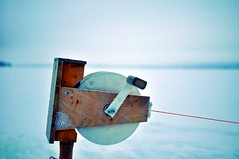 Standing right next to the main hole, there's a post on which there is a roll of nylon line in a sort of winch. You take the end of this nylon string, and pull it to the marker at the other end of the fish net, letting the string unroll from the winch. Once at the other end of the net, you drill a hole in the ice - the hole needs to be only about 10 cm in diameter. Through this hole, you push a stick which has a steel wire hook at the end, and use the hook to pull up the part of nylon string that is at the end of the fish net below the ice. Get the end of the net, untie it from the nylon string under the ice, and tie it to the end of the string that is attached to the winch.
Standing right next to the main hole, there's a post on which there is a roll of nylon line in a sort of winch. You take the end of this nylon string, and pull it to the marker at the other end of the fish net, letting the string unroll from the winch. Once at the other end of the net, you drill a hole in the ice - the hole needs to be only about 10 cm in diameter. Through this hole, you push a stick which has a steel wire hook at the end, and use the hook to pull up the part of nylon string that is at the end of the fish net below the ice. Get the end of the net, untie it from the nylon string under the ice, and tie it to the end of the string that is attached to the winch.
Now, come back to the main hole. Use the stick with hook to pull up the other end of the fishing net through the main hole. And voilá, you can start pulling up the fish net through the main hole; the nylon rope is extended from the winch roll next to you, as the net pulls its end under the ice.Get the net from under the ice - you don't need to take it all out from under the ice, just enough to see where the fish are. And here's your catch!
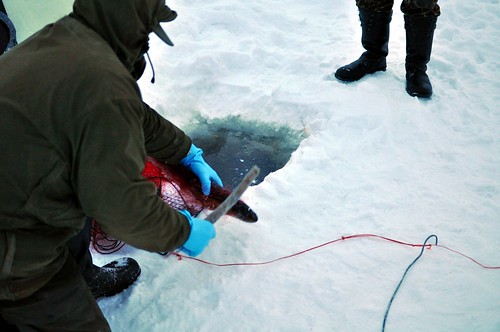
The fish is alive and struggling, so the next thing to do is to take the killing cudgel. Hit the fish at the back of the head to break its neck, and it won't suffer. And won't squirm.
Then take the fish out of the net. Here my father-in-law uses his patented tool - made of a piece of wood and a nail - to help the fish through the net. By the way, latex gloves are nice here. In the bad old days, you would do this with your bare hands. I can assure you that very healthy exterior blood circulation is necessary.
Now the fish is out, dead but fresh. It's cleaned on the spot: cut away the fins with scissors, cut open the belly and remove the guts, and use a scaling iron to remove the scales. No need to mess up the kitchen.
A couple of years ago we did the same thing, but weather had been much warmer. Thus, the ce was too weak for driving, but a bicycle also works nicely!
This is fishing with nets under the ice. You might wonder how to put the fish nets under the ice in the first place. I don't have any pictures of that, but there are two ways: either you can leave a thin nylon rope underwater before the lake is frozen - mark the end points with floaters and tree twigs so you find the rope later - or just wait for the lake to freeze properly and then make holes in the ice, and use long poles or sticks to put the nylon rope in its place under the ice cover. This is bronze age technology - except for the nylon.
For one fish net, the rope is about 30 meters long, and the ends are attached to sticks or fir-tree twigs that stick up from the ice so that it is easy to find them. So, now that you have two holes in the ice and a rope between them under the ice, you attach your net to one end of the rope and pull the other end to pull the fishnet to its place under the ice. And in a day or two, you can go back and open the holes and check if you caught any fish. Repeat every other day or so, through the winter. That's what we did today.
We went by car, driving on the ice. The ice layer is maybe 30 cm thick so it carries a car very easily and without risk, though the usual procedure is still that we take off the seat belts when on frozen lake. There's nothing you can collide with, and it's not even possible to stop very quickly, so the belt is not adding any safety, an it's nice to think that should the ice turn out to be weak, you can get out of the car quickly.
Note, the pictures are a bit blurry - today we went to the ice around the time of sunset, 2PM, so it was getting dark, and it was a cloudy day, so even with f/1.8 the pictures are grainy. But though the day is short, it doesn't get dark very quickly, and you can work for an hour or two even after the sun has gone down. It's all white around you, so even the tiniest light is enough for working, if not for natural-light photography, or finding your way around.
This Christmas, there's not that much snow yet in Karelia - just 15-20 cm, much less than in Helsinki - so fishing is convenient: you can drive anywhere on the ice, and just park right next to the bigger of the holes in the ice. This is the main hole which is used for pulling the net up and seeing if there's any catch. Most of the equipment is left at this place for all winter so that you don't need to carry it back and forth: there is a shovel for snow, a drill called kaira to make small holes in the ice, a large iron-pointed ice pick called tuura for breaking the ice, plus some smaller things.
The main hole has two or three nets going out to different directions. The hole is about 50 cm x 50 cm and has a styrofoam lid - with some soft snow on top of it - that insulates it from frost so that the water doesn't freeze too thickly overnight. When you arrive at the spot, first you take out the snow that is on the lid as additional insulator, then take away the lid.
Then you apply the large ice pick and break the ice cover from the main hole, and take out the slush from the water.
 Standing right next to the main hole, there's a post on which there is a roll of nylon line in a sort of winch. You take the end of this nylon string, and pull it to the marker at the other end of the fish net, letting the string unroll from the winch. Once at the other end of the net, you drill a hole in the ice - the hole needs to be only about 10 cm in diameter. Through this hole, you push a stick which has a steel wire hook at the end, and use the hook to pull up the part of nylon string that is at the end of the fish net below the ice. Get the end of the net, untie it from the nylon string under the ice, and tie it to the end of the string that is attached to the winch.
Standing right next to the main hole, there's a post on which there is a roll of nylon line in a sort of winch. You take the end of this nylon string, and pull it to the marker at the other end of the fish net, letting the string unroll from the winch. Once at the other end of the net, you drill a hole in the ice - the hole needs to be only about 10 cm in diameter. Through this hole, you push a stick which has a steel wire hook at the end, and use the hook to pull up the part of nylon string that is at the end of the fish net below the ice. Get the end of the net, untie it from the nylon string under the ice, and tie it to the end of the string that is attached to the winch.Now, come back to the main hole. Use the stick with hook to pull up the other end of the fishing net through the main hole. And voilá, you can start pulling up the fish net through the main hole; the nylon rope is extended from the winch roll next to you, as the net pulls its end under the ice.

The fish is alive and struggling, so the next thing to do is to take the killing cudgel. Hit the fish at the back of the head to break its neck, and it won't suffer. And won't squirm.
Then take the fish out of the net. Here my father-in-law uses his patented tool - made of a piece of wood and a nail - to help the fish through the net. By the way, latex gloves are nice here. In the bad old days, you would do this with your bare hands. I can assure you that very healthy exterior blood circulation is necessary.
Now the fish is out, dead but fresh. It's cleaned on the spot: cut away the fins with scissors, cut open the belly and remove the guts, and use a scaling iron to remove the scales. No need to mess up the kitchen.
And then, just put the fish in your box. Once all of the net is checked, use the winch to pull the net back to its place. Go back to the other end of the net, untie it from the nylon string on top of the ice, tie it again to the string that is under the ice, and release it through the small hole so that it again fully under the ice, ready for catching new fish.
Repeat this procedure for all your nets, put your fish in your insulating box - the point is to not let them freeze as that spoils the taste - drive back, and your fishing trip complete. Drive home and heat up the stove for cooking!
A couple of years ago we did the same thing, but weather had been much warmer. Thus, the ce was too weak for driving, but a bicycle also works nicely!
Can most people be better than average?
There is a popularly referred controversy: "most individuals think they are better drivers than the average". People think that this is not possible, and that this shows how individuals falsely regard themselves superior to others. But I think the statement is actually at least partly true: most people are better drivers than the average, although not perhaps in the way people themselves think about it.
A common belief is that it is a mathematical impossibility that most people would be better-than-average drivers. But people are confusing average with median. If we take "average" to mean arithmetic average, things become different. For driving skill, you do not have to assume that the skill function has a "normal" Gaussian distribution.
Of course, mostly it is down to the definition of "what is a good driver". I'll take a simplified definition that a good driver gets from place A to place B, safely and at reasonable speed, without causing distress to others. I tend to think that most people are normal drivers, a minority are better than normal, and a small minority are really horribly bad, dangerous and irritating drivers.
Let's put this into numbers, with a population of 10 drivers, their driving skill graded on a scale from 1 to 10. Six of them are ordinary drivers, and get a score 7. One handles the car very well, gets score 8, and one handles the car very well and is also exceptionally well aware of other traffic, can handle difficult environmental hazards such as rain and snow safely etc, so she gets a 9.
Then there is the grandpa who is 85 years old, half blind and drives according to a rule book from 1954, though slowly. He gets a score 5. And, finally, there's the young bloke who thinks he is The Stig, but does not control the car nearly as well as he thinks, ignores rules, and drives recklessly. He gets a score 3 for driving skill.
And voilà, we have a population of 10 where the average driver score is 6.5, and 8 out of 10 drivers are better than average. Not everyone can be better than average, but it is possible that most people are.
A common belief is that it is a mathematical impossibility that most people would be better-than-average drivers. But people are confusing average with median. If we take "average" to mean arithmetic average, things become different. For driving skill, you do not have to assume that the skill function has a "normal" Gaussian distribution.
Of course, mostly it is down to the definition of "what is a good driver". I'll take a simplified definition that a good driver gets from place A to place B, safely and at reasonable speed, without causing distress to others. I tend to think that most people are normal drivers, a minority are better than normal, and a small minority are really horribly bad, dangerous and irritating drivers.
Let's put this into numbers, with a population of 10 drivers, their driving skill graded on a scale from 1 to 10. Six of them are ordinary drivers, and get a score 7. One handles the car very well, gets score 8, and one handles the car very well and is also exceptionally well aware of other traffic, can handle difficult environmental hazards such as rain and snow safely etc, so she gets a 9.
Then there is the grandpa who is 85 years old, half blind and drives according to a rule book from 1954, though slowly. He gets a score 5. And, finally, there's the young bloke who thinks he is The Stig, but does not control the car nearly as well as he thinks, ignores rules, and drives recklessly. He gets a score 3 for driving skill.
And voilà, we have a population of 10 where the average driver score is 6.5, and 8 out of 10 drivers are better than average. Not everyone can be better than average, but it is possible that most people are.
6.12.2010
Male Genital Mutilation
 OK, I'm falling for it. I know this is what the Greens wanted - it's a provocation and the more people talk about it, the happier they are.
OK, I'm falling for it. I know this is what the Greens wanted - it's a provocation and the more people talk about it, the happier they are. But still, I think this might backfire on them. I mean, of course, the new election campaign logo, which takes the Finnish coat of arms, puts is on a green background and includes the text "Uusi Suomi" (New Finland).
Twisting national emblems is always a bit risky. Sure, there is a good point. The Finnish heraldic lion has been adopted (as a tattoo, necklace or T-shirt emblem) by some of the skinhead idiots who just hate any foreigners, particularly dark-skinned. Therefore it's nice that others also use it. The lion shouldn't belong only to the obnoxious xenophobes. But mutilating the coat of arms with ugly colours isn't proper (and could be unlawful).
Strangely, although the lion is now set in a background of faded, slightly dirty green, the lion is still wielding a straight Western sword, and trampling on the Eastern scimitar, which for the Finns, traditionally reminds of the swords of the Cossacks, who the Tsars used for intimidation of their subjects and enemies alike. The scimitar is down there, and has been since the times of Gustav Vasa. I would actually have expected Greens to switch the blades, because that would have been consistent with their policies.
But the Greens didn't stop with changing colour. They just couldn't resist castrating the lion. Why on earth do you have to take the distinctly male heraldic lion, leave everything else there, but remove the symbolic genitals? What does it tell about you? That you want to wuss along with the Swedes?
And then, Uusi Suomi website isn't thrilled about this trademark infringement, either.
War, war, war
It's Finnish Independence day. Time for celebration, right? Well, yes, but what I see is very little celebration for independence. What I see is just more and more talk about the wars, fighting, war veterans.
Hey, wake up. It's too late. The youngest Finnish veterans of Second World War are now around 85 years old. There's not a lot more we can really do for them. There are so few left that they can be adequately taken care for. They've earned the respect they now enjoy but I see little point in glorifying their sacrifices. After all, to repeat some of my earlier posts, I have the Pattonesque idea that war is not about dying for your country; it's about letting the other poor bastard die for his.
The veteran issue has been becoming more and more obsessive, although 20 years have now passed since the USSR ceased to exist and fewer and fewer of the actual fighting men are still among us. At least on TV and official celebrations, the independence day is mostly focused on wars.
So, what does independence really mean now? Many say that Finland is not really independent after joining EU and adopting the euro. True, joining this federalist-obsessed crowd has limited our sovereignty. I don't think that switching Finnmarks to the euro currency means nearly as much as the European treaties, some of which limit quite a lot what we can and can not do in this country. But of course the international treaties also have their good sides. And whether a member of EU or not, small countries like Finland are more and more dependent on international trade, globalization, exchange of people, money and ideas.
I think our current president Tarja Halonen has done remarkably little to point out any new direction for the country. Still, 2.2 million Finns are today going to watch tonight's reception where she shakes hands with an array of more or less colourful guests. Is that the best content we can give to our independence day? Watch on TV how our representatives get drunk for us?
What I'd give as an example for a suitable action on an independence day would be to announce that we withdraw from the utterly stupid Ottawa treaty and will continue to take care of our defence independently, thank you. That we decide ourselves who can immigrate to this country and who cannot, blast the ECJ. That we enforce legislation that guarantees equal rights and equal obligations for each citizen, forget the ECHR. That would show some independent spirit.
Hey, wake up. It's too late. The youngest Finnish veterans of Second World War are now around 85 years old. There's not a lot more we can really do for them. There are so few left that they can be adequately taken care for. They've earned the respect they now enjoy but I see little point in glorifying their sacrifices. After all, to repeat some of my earlier posts, I have the Pattonesque idea that war is not about dying for your country; it's about letting the other poor bastard die for his.
The veteran issue has been becoming more and more obsessive, although 20 years have now passed since the USSR ceased to exist and fewer and fewer of the actual fighting men are still among us. At least on TV and official celebrations, the independence day is mostly focused on wars.
So, what does independence really mean now? Many say that Finland is not really independent after joining EU and adopting the euro. True, joining this federalist-obsessed crowd has limited our sovereignty. I don't think that switching Finnmarks to the euro currency means nearly as much as the European treaties, some of which limit quite a lot what we can and can not do in this country. But of course the international treaties also have their good sides. And whether a member of EU or not, small countries like Finland are more and more dependent on international trade, globalization, exchange of people, money and ideas.
I think our current president Tarja Halonen has done remarkably little to point out any new direction for the country. Still, 2.2 million Finns are today going to watch tonight's reception where she shakes hands with an array of more or less colourful guests. Is that the best content we can give to our independence day? Watch on TV how our representatives get drunk for us?
What I'd give as an example for a suitable action on an independence day would be to announce that we withdraw from the utterly stupid Ottawa treaty and will continue to take care of our defence independently, thank you. That we decide ourselves who can immigrate to this country and who cannot, blast the ECJ. That we enforce legislation that guarantees equal rights and equal obligations for each citizen, forget the ECHR. That would show some independent spirit.
Tilaa:
Blogitekstit (Atom)

